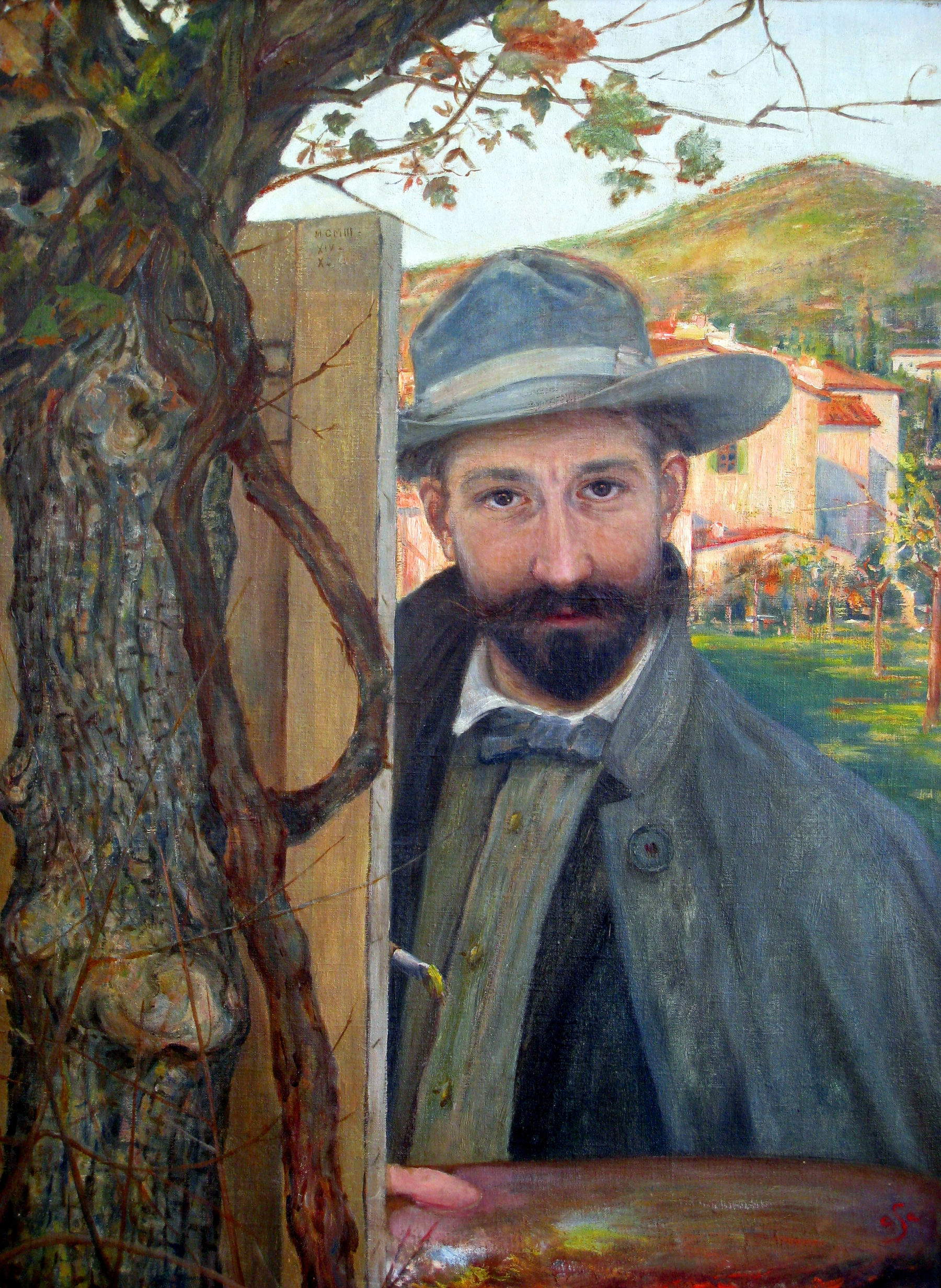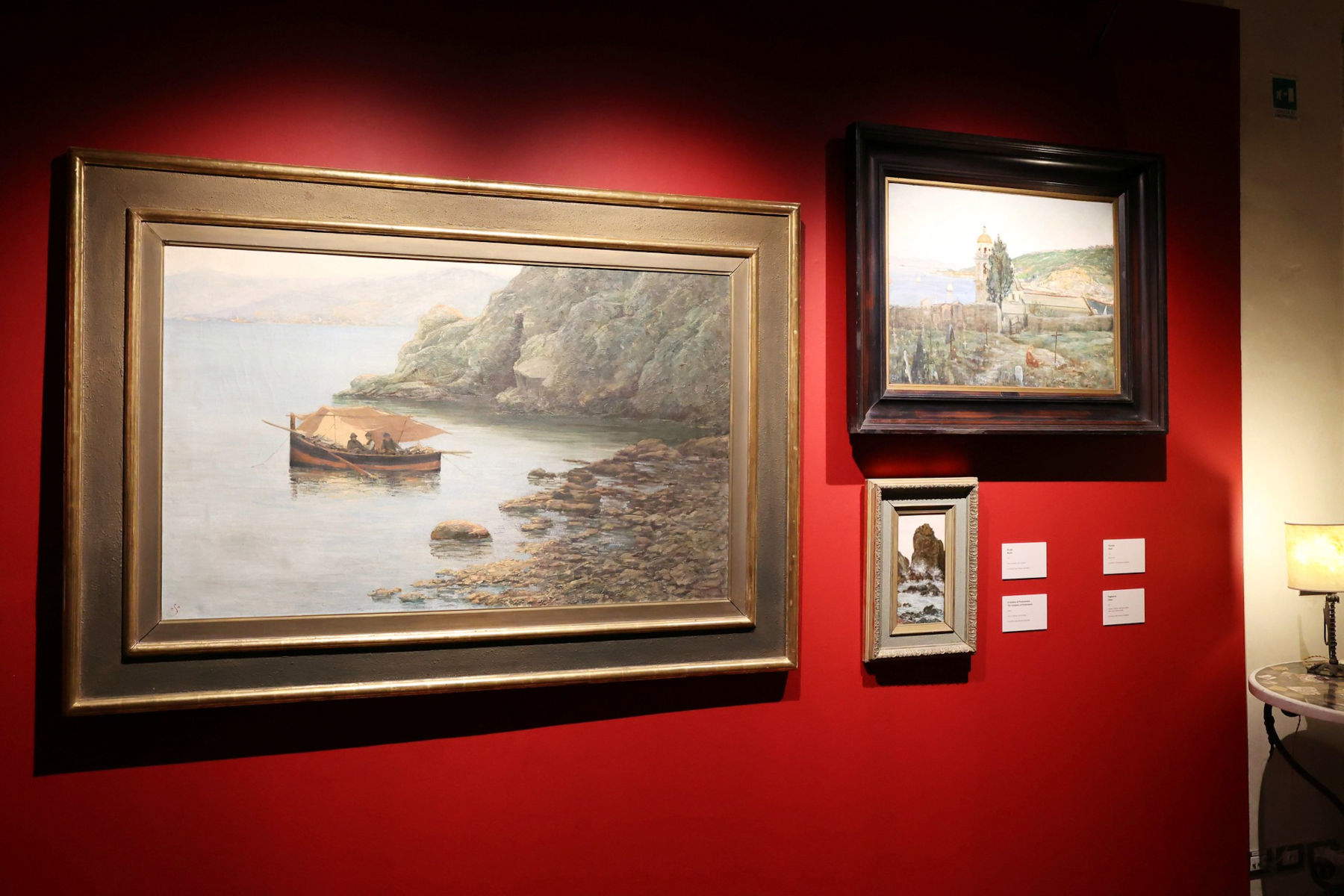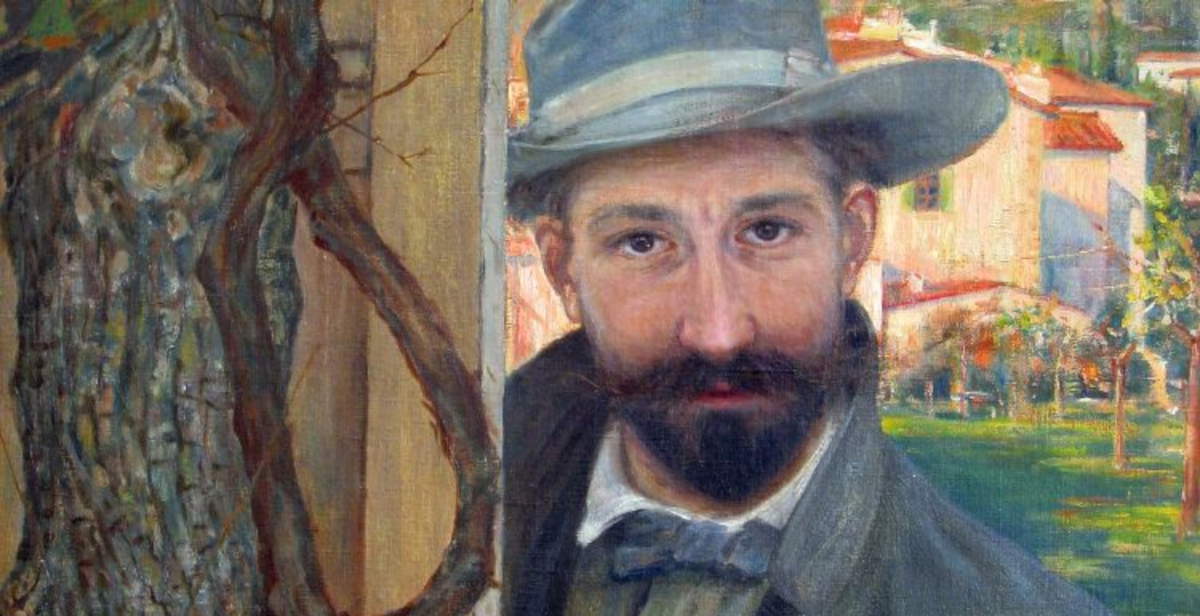Florence is preparing to host one of the most well-rounded exhibitions devoted to the artistic landscape of the early 20th century. From Nov. 27, 2025 to Feb. 22, 2026, the Sale Fabiani of Palazzo Medici Riccardi will host the exhibition Carlo Adolfo Schlatter. Artist of the Spirit, promoted by the Metropolitan City of Florence and organized by Fondazione MUS.E, under the curatorship of Anna Mazzanti and the scientific coordination of Valentina Zucchi, in collaboration with Casa Museo Schlatter, the School of Design of the Milan Polytechnic and the Gabinetto scientifico letterario G.P. Vieusseux. The exhibition aims to trace the path of one of the most singular protagonists of the Florentine art scene, a painter, writer and scholar of philosophy and theosophy.
Carlo Adolfo Schlatter (1873-1958) trained at the turn of the century in the courses of the Scuola del Nudo, studying with Ciaranfi and Ussi in a cultural context permeated by spiritual reflections and widespread anti-positivist sentiment. His adherence to theosophy at the end of the 19th century marked a decisive turning point in his research, steering it away from Macchiaioli-style realism toward a symbolism characterized by ideal and mystical inspirations. Schlatter thus developed a personal and visionary language that combined introspection and spiritual tension, nature and thought, visible and invisible, through painting, graphics and writing.

“Let us take the chance,” says Claudia Sereni, councilwoman of the Metropolitan City of Florence delegated to Culture, “to discover this artist in all his facets, a man who lived at the turn of the century, who trained at the Academy of Fine Arts in Florence. Let us be traversed by his human journey, moving from room to room in the exhibition at Palazzo Medici Riccardi, from the mystical Schlatter to the esoteric, from the symbolic to the spiritual.”
“The art of Carlo Adolfo Schlatter is thought made image,” adds Valentina Zucchi, scientific director of Palazzo Medici Riccardi. “Traversing civilizations, myths, religions and philosophies from East to West, he turns his gaze beyond the web of life to plumb the depths of self and existence. His paintings, etchings and writings, exhibited here for the first time, return the outcome of his researches, in the context of the lively Florentine cultural atmosphere that at the dawn of the 20th century drew on philosophy and theosophy to initiate new paths of reflection and artistic expression.”
" Between the nineteenth and twentieth centuries, more or less well-known artists, starting with Kandinsky and Mondrian and ending with the Swedish Hilma af Klint, by now risen to be the forerunner champion of theosophy and abstraction, found in the theosophical discipline an important source of inspiration," explains Anna Mazzanti, curator of the exhibition. “No less does Carlo Adolfo Schlatter nourish his artistic expression from these theories, but in an inversely proportional way: it is the theosophical thoughts that give rise to his own visual imagination as a theosophist-artist.”
“After nearly 100 years, the works of Carlo Adolfo Schlatter are being exhibited for the first time since his death,” said Alessandra Schlatter. “A Florentine tribute to this artist in such a significant palace, which has taken up his message: my words are seeds in the wind will sprout into another man. Città Metropolitana di Firenze and Fondazione MUS.E have realized this dream, providing the soil where these seeds can germinate and be delivered to the future, in a world that seeks answers that only ethics can provide.”

"We are pleased with this collaboration with the MUS.E Foundation to create the exhibition Carlo Adolfo Schlatter. Artist of the Spirit in Palazzo Medici Riccardi," said Riccardo Nencini, president of the Gabinetto scientifico letterario G.P. Vieusseux, “You will find on display six drawings from the Schlatter fund, donated in 2015 to the Gabinetto Vieusseux by the artist’s heirs. For the occasion, there will be a small exhibition of archival documents, curated by Anna Mazzanti and the Archivio Contemporaneo, thanks also to the work done by the students of the design school of the Politecnico di Milano. The documentary exhibition will be open to visitors at the headquarters of the Bonsanti Archives, 42 Maggio Street, during regular opening hours. You can thus see up close some precious documents of this singular artist and get to know our Archive.”
The exhibition layout is divided into seven main sections that take the visitor along the fundamental themes of the artist’s production. It opens with aself-portrait of the 30-year-old Schlatter and a portrait of his wife Emma Moni, a central figure in his life and imagination. Upon Emma’s death, theosophy also becomes a practice of comfort and a means of getting spiritually closer to the soul of his beloved, while the figures in the portraits take on a completely symbolic character. The section on Landscapes shows how nature, in addition to representing reality, becomes a symbol of soul elevation and a mystical tool, an inner mirror and manifestation of the Infinite Spirit, oriented toward liberation from matter. The Marines, on the other hand, take on esoteric significance: the sea represents the flow of consciousness and the infinite, marking the boundary between matter and spirit. The Contrasts section features works characterized by opposing scenarios and color and atmospheric effects with clear symbolic values. In some paintings the warmth of the sun and fire conveys the essence of higher knowledge, while cool tones suggest the vastness of the universe and the stars. Schlatter’s attention to color theories, both in the Theosophical and Symbolist contexts, is evident in this part of the exhibition.

In the Symbolism section, the artist reaches a fully spiritual dimension, in which colors, lights and forms become instruments of transmission of cosmic forces and metaphysical principles, in dialogue with theosophical and Symbolist color theories. Notable is the section devoted to Manuscripts and Printed Books, which brings together theosophical volumes, some printed but most handwritten and illustrated by the artist. Painting and word coexist in a unity of purpose: the illustrations made in woodcuts and linocuts, referred to by Schlatter as “monolithotypes,” with hand retouching, serve as instruments of meditation and ritual symbols of mystical elevation. For Schlatter, writing and painting represent two manifestations of the same spiritual impulse, aimed at making the invisible visible and guiding the soul beyond the sensible world. Books thus become instruments of meditation charged with mysticism, fundamental elements for understanding the depth of his work.
The exhibition continues with two strongly evocative environments. TheAtelier, reconstructed on the basis of a historical black-and-white photograph of the studio in Viale dei Mille, offers an environmental narrative that relates the photograph to furnishings, original objects and some of the works present in the historical image, among which The Cemetery of Portovenere, a recurring subject dear to the artist, stands out. The path concludes with Spiritual Testament, a video installation in which actor Amerigo Fontani interprets Schlatter’s final words, offering the public a message of rebirth and light. A section of the exhibition also finds space in the A. Bonsanti Contemporary Archive of the Gabinetto scientifico letterario G.P. Vieusseux, where a selection of documents from the Schlatter Fund donated in 2015 by his heirs is on display. Photographs, sketches, menabos and the original will can be seen here, with the opening scheduled for Wednesday, Nov. 26, at 4 p.m. The exhibition is organized with the support of the Italian Theosophical Society APS and the Pietre di Rapolano company.
 |
| Carlo Adolfo Schlatter in Florence: painting, theosophy and symbolism in the early twentieth century |
Warning: the translation into English of the original Italian article was created using automatic tools. We undertake to review all articles, but we do not guarantee the total absence of inaccuracies in the translation due to the program. You can find the original by clicking on the ITA button. If you find any mistake,please contact us.